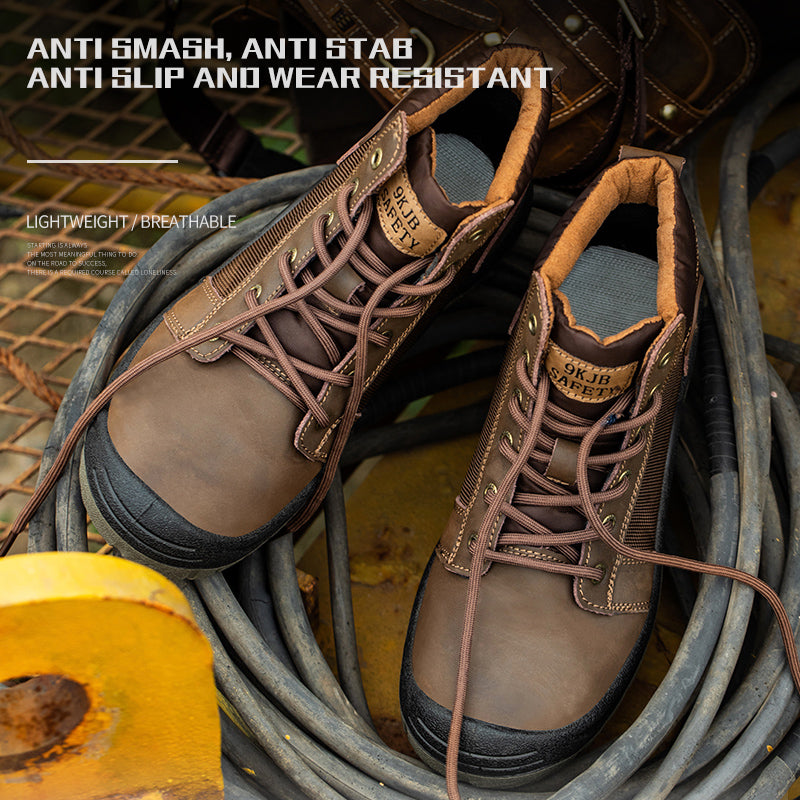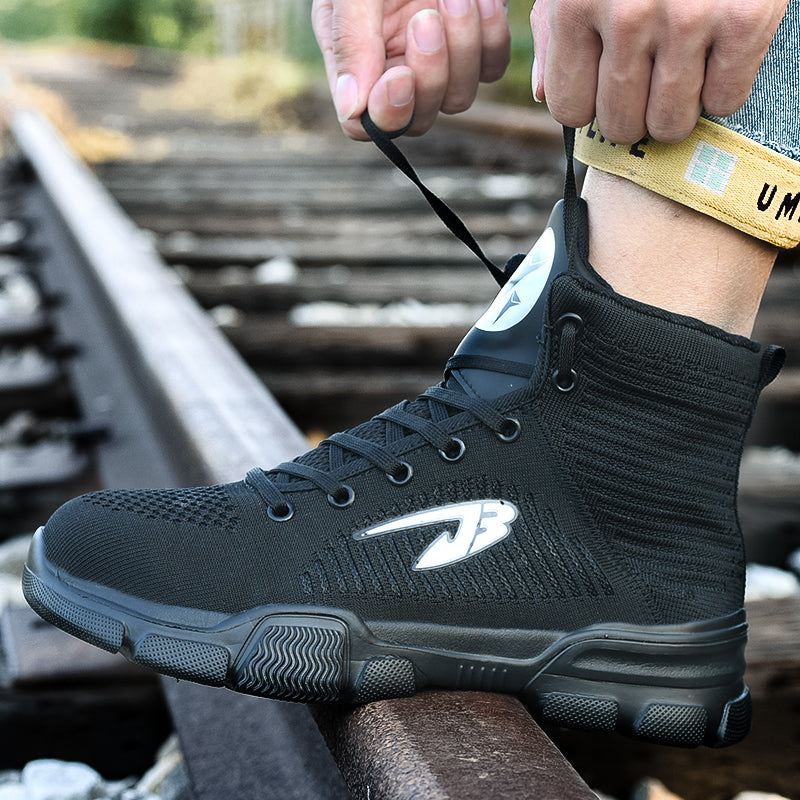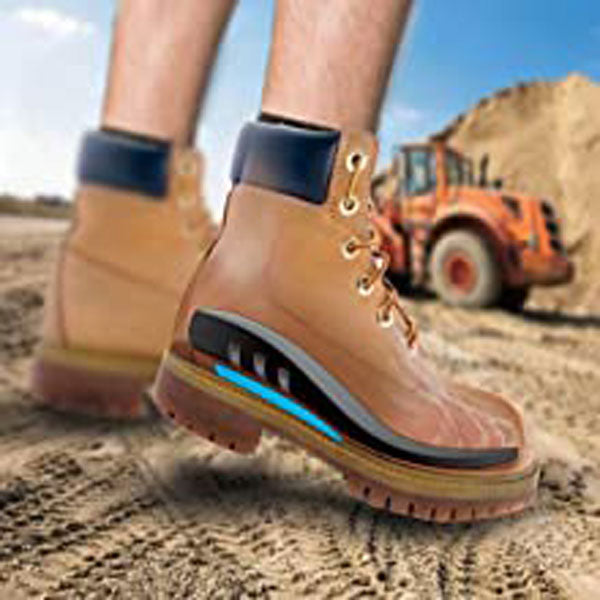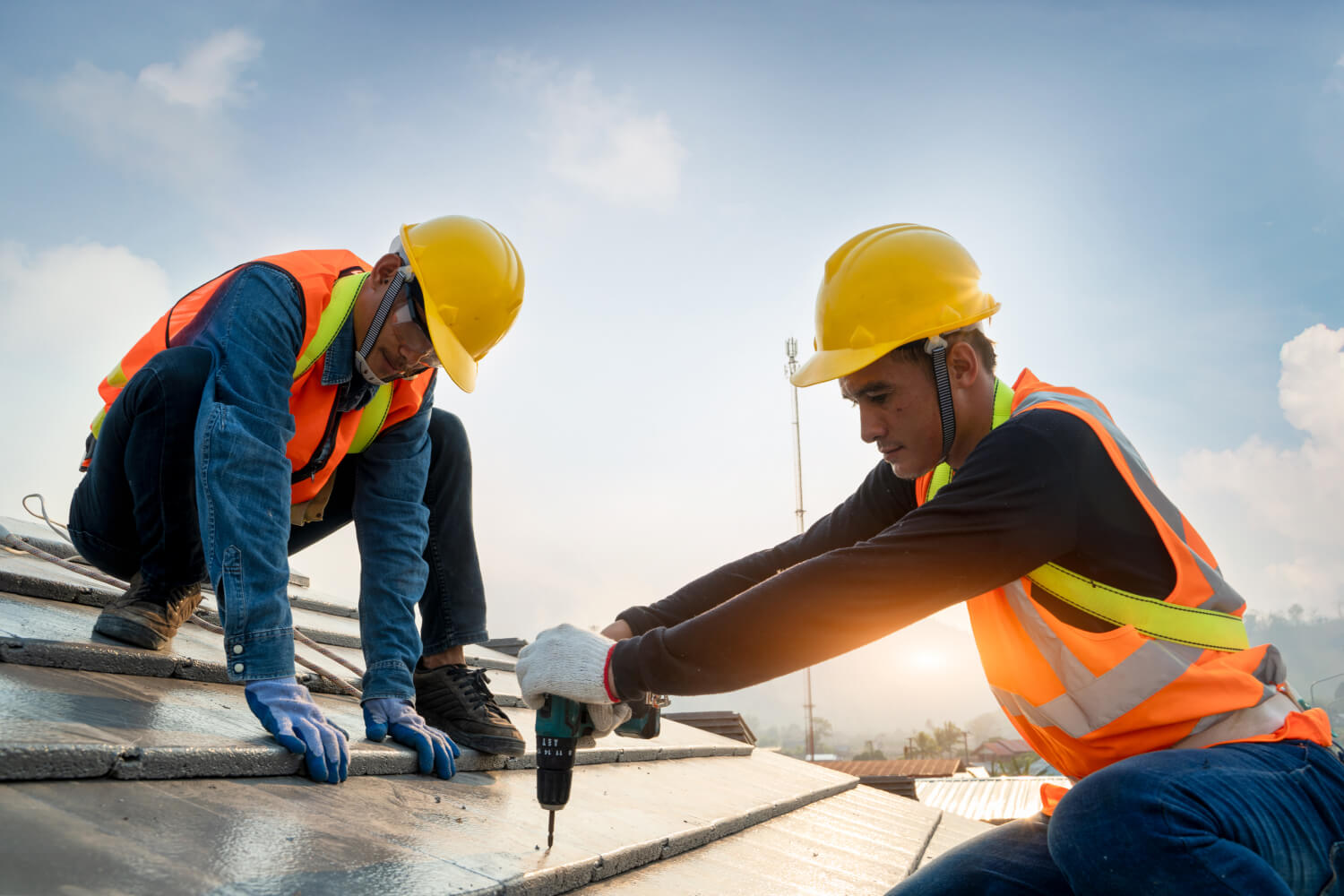Top Five Must-Know Ladder Safety Tips
Ladder safety and receiving the proper ladder use training for yourself and anyone working with you is extremely important. Over the last ten years, ladder-related injuries have increased by 50%.
More than 90,000 people receive emergency room treatment from ladder-related injuries each year. OSHA believes that 100% of all ladder accidents could be prevented through proper attention to equipment and training.

We're going to touch upon five extremely important safety practices for proper ladder use here.
- Weight distribution on ladders.
- Carrying loads and ascending ladders.
- The three points of contact climb.
- Ladder placement.
- Ladder safe footwear.
Safety Practice 1: Weight Distribution on Ladders.
The golden rule of ladder usage: One Person At A Time.
Unless you're using a ladder specifically designed for two people, like a Trestle Ladder, you should never have more than one person on a ladder at a time. You're just asking for trouble if you have two different moving weights on a ladder.
Make sure the Duty Rating of the ladder is greater than the total weight of the climber, tools, supplies, and other objects. This is an indication of the maximum weight capacity the ladder can safely carry.
Five Categories of Ladder Duty Ratings:
- Type IAA (Extra Heavy Duty) 375 pounds
- Type IA (Extra Heavy Duty) 300 pounds
- Type I (Heavy Duty) 250 pounds
- Type II (Medium Duty) 225 pounds
- Type III (Light Duty) 200 pounds
Look for the Duty Rating of your ladder on the specifications label. Every ladder must have a Duty Rating sticker on the side.
Longer ladders do not have a higher weight capacity. There is no relationship between ladder length and weight capacity.
Safety Practice 2: Carrying Loads and Ascending Ladders.
In addition, you must always maintain the three points of contact when on a ladder (See Safety Practice number 3). This means that you will need another tool or accessory when hauling heavy materials up the ladder.
Ladder hoists are the most common choice here, especially for roofing materials. If you don't hire a contractor for this, look for a hoist that accommodates all types of building materials and can easily transport up to 400 pounds of material to high rooftops.
Increase your ladder versatility and ability to safely handle loads by retrofitting it with some workstation accessories. Ladder manufacturers usually offer extras to help you avoid excessive movement and provide assistance getting materials to your work area.
Consider these additions for your ladder:
- Paint bucket attachment.
- Tool basket.
- Ladder stabilizers, AKA "Stand-offs."
- Ladder levelers.
- Ladder workstations.

Safety Practice 3: The Three Points of Contact Climb.
Becoming too hasty in your climb, sudden movements, and improper climbing posture all contribute to ladder-related injuries. Reduce your risk of slipping and falling by following the three-point-of-contact rule.
Keep the center of your stomach between the ladder side rails at all times when climbing and while working from the ladder. Always keep two hands and one foot, or two feet and one hand in contact with the ladder, whether you're ascending, descending, or working from the ladder.
This 3 point contact will help you stay stable should one of your limbs slip during the climb. Always maintain full concentration on your movement and the environment around you, and avoid overreaching while working that will disrupt your balance.
Do not carry any objects that can interfere with a firm grip on the ladder. You won't be able to maintain three points of contact with the ladder, and your chance of falling increases in the event a hand or foot slips.
Safety Practice 4: Ladder Placement.
Rule number one in ladder placement is to make sure that your ladder is in good working condition. Ladders with loose or missing parts or ones that sway from side to side will not allow you to maintain safe ladder positioning.
Rule number two is to make sure you choose the right size ladder for the job. If you choose a ladder that doesn't fit the job and you end up overreaching or standing on tiptoe to do a job, you also risk an increased chance of falling.
The ladder's placement must be high enough that you don't have to use the top run of the ladder. Standing on the top run or step will greatly increase the risk of a ladder-related accident.
It's recommended that you use a ladder tall enough to allow you to work from the middle steps, avoiding the top two. Most ladders aren't designed to be worked from that high.
The ground must be firm and level. Conditions need to be as dry as possible without any slippery conditions at the base or the top support points.
Is there a door in the area you need to place the ladder? If so, make sure that the door is locked or blocked to prevent accidental interference by someone not aware of your presence.
Once you've determined that you have the right ladder for the job, follow the 4 to 1 rule for the best stability. Place the ladder one foot away from the building for every four feet of height. If the ladder rests 16 feet high, the bottom should be four feet away from the building.

Safety Practice 5: Ladder safe footwear.
Wearing the wrong shoes for the job could spell disaster.
Only climb ladders in clean, slip-resistant shoes. Avoid leather soles as they're not slip-resistant enough.
For maximum comfort and ultimate protection, we recommend footwear from Indestructible Shoes.
Many manufacturers spend so much time focusing on building a robust, hard boot that they forget to think about how you move through different surfaces in your work environment. This results in lowered quality of slip resistance and often aching feet at the end of a long workday.
At Indestructible Shoes, we design safety shoes that work with your natural movement, giving you just the right amount of foot support in critical areas while maintaining proper flexibility. In addition, we adhere to strict requirements to bring you the best in slip-resistant soles that help you stay safe in multiple workplace environments.







